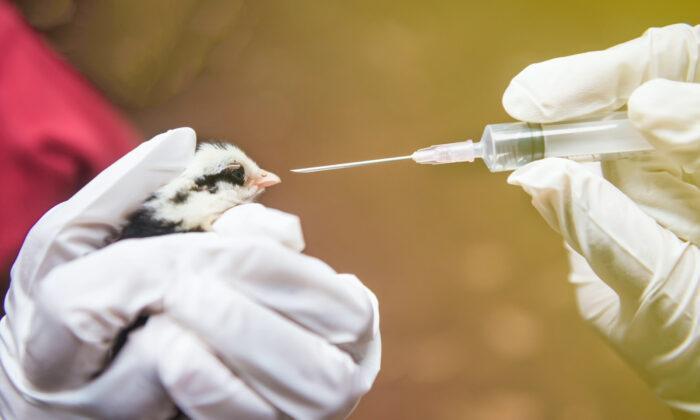Many people know about the routine use of antibiotics in livestock production—and object to it. The drugs are profitable to meat producers because they cause animals to gain
more weight with less feed and prevent the outbreak of disease in often cramped concentrated animal feeding operation (CAFOS) conditions.
In 2017, the Food and Drug Administration
began regulatory measures to prevent the use of livestock antibiotics for growth purposes and
recently finalized the guidances. Injudicious antibiotic use drives the development of antibiotic-resistant
bacteria.
As the extent of antibiotic residues and antibiotic-resistant bacteria in meat has been
revealed, there has been a public backlash against the drugs’ use, resulting in some meat producers labeling their products “raised without antibiotics.” The problem consumers are unaware that other drugs are now being used in meat production and left off the labels. Worse, in an effort to reduce the publicly spurned antibiotics, meat producers are
turning to vaccines.
“Vaccines and other alternative products can help minimize the need for antibiotics by preventing and controlling infectious diseases in animal populations, and are central to the future success of animal agriculture,” read a 2018 article in
Veterinary Research.
How prevalent are livestock vaccines? Drugmaker Merck markets
58 poultry vaccines for diseases that food consumers neither know about nor probably
want to know about like coccidiosis, infectious bronchitis, Newcastle disease, infectious laryngotracheitis, mycoplasma gallisepticum, Marek’s disease (
chicken herpes), infectious bursal disease, hemorrhagic enteritis, rhinotracheitis (turkey coryza), avian encephalomyelitis, fowl pox, and more.
In addition to vaccines for
cattle,
swine, and
fish, food animals are also vaccinated as embryos.
By 2020, the animal vaccine market was estimated to be
$7.2 billion.In Ovo Vaccination
More than 90 percent of broiler chickens in the United States are vaccinated “in ovo,” according to research published in
Veterinary Research in 2018. That means they are vaccinated as embryos in the egg. Vaccines are either directly injected into the embryo or into the amniotic cavity of the egg. But like human vaccines, the technology has its risks.
The authors of the Veterinary Research study report that the mass routine vaccination at the hatchery, “is labor-intensive, causes stress for the chicks, and high sanitary standards need to be followed during vaccine preparation and injection to manage infection risks.” Injecting vaccines at the wrong stage of embryonic development can be disastrous, they write, giving the example of 1o- to 12-day-old embryos who were injected with turkey herpes virus too early and developed lesions and died.
Are poultry and other food animal vaccines residues in the meat? Possibly. Researchers writing in the
Archives of Virology in 2011 advised that a “vaccine, particularly if injected subcutaneously, should be introduced into an area of the animal not used for human consumption such as behind the animal’s ear or in the area of the chest wall behind the elbow.” That way, wrote the researchers, “if there is any residual vaccine left or any reaction to it, there will be neither involvement of an edible part of the carcass nor trim losses in food animals.”
Unlabeled Hormones
Have you ever heard of
oestradiol-17, zeranol, trenbolone acetate, and melengestrol acetate? Probably not but they are hormones
routinely used in U.S. cattle for growth production.
Much of the European Union looks askance at these hormonal drugs. According to the EU’s
Scientific Committee on Veterinary Measures Relating to Public Health, “Misplaced [hormonal] implants and repeated implanting, which seem to occur frequently, represent a considerable risk that highly contaminated meats could enter the food chain.”
The EU
Scientific Committee also wrote that “the highest rates of breast cancer are observed in North America, where hormone-treated meat consumption is highest in the world…Prostate cancer shows similar variations…[and] is comparable to that of breast cancer.” These cancers are known to be hormone-dependent or hormonally mediated.
Scientists writing in the
journal Anticancer Research say the hormone zeranol may “play a critical role in mammary tumorigenesis” and “be a risk factor for breast cancer.”
Few in the U.S. are aware that other countries reject U.S. hormone-raised beef. According to the
Library of Congress, “The United States and the European Union (EU) have engaged in a long-standing and acrimonious trade dispute over the EU’s decision to ban hormone-treated meat.” The conflicts intensified when, in 2009, the U.S. Trade Representative announced its intent to increase tariffs on some products. The EU claimed this constituted an “escalation” of the dispute.
As the United Kingdom prepared to leave the EU, the
London-based Food Research Collaboration wrote, “there is a risk that food standards may be sacrificed to win trade agreements with non-EU states such as the USA. This report looks at the case of hormone-treated beef, which is permitted in the U.S., but which the EU refuses to import. The World Trade Organization has accepted the EU’s refusal to import hormone-reared beef. The report shows that at least one of the hormones routinely used in US beef production has been judged to be a significant cancer risk by the EU.”
China also restricts “beef from cattle implanted with growth promoting hormones,” says the
University of Minnesota Extension, a research and outreach partnership between the university and the state, federal and county governments. The Extension defends the drugs as promoting sustainability, and as natural as hormones found in plants.
A Problematic Growth Drug
Not many people are aware of ractopamine either—an asthma-like drug designed to add weight to livestock but
banned in 160 countries by 2014. In an early
Canadian study, monkeys given ractopamine “developed daily tachycardia”—rapid heartbeat. Rats fed ractopamine developed a constellation of birth defects like cleft palate, protruding tongue, short limbs, missing digits, open eyelids, and enlarged heart.
In Taipei City, Taiwan in 2007, 3,500 pig farmers gathered at the Department of Health and Council of Agriculture to protest the possible lifting of a ractopamine ban, Taiwan News reported. Chanting, “We refuse to eat pork that contains poisonous ractopamine,” and “Get out, USA pork” protesters threw eggs at police, soldiers, and reporters and pig dung at government buildings.
According to
Temple Grandin, the famed American scientist and animal behaviorist concerned with humane slaughter, the “
indiscriminant use of the beta-adrenergic agonist Paylean (ractopamine) has contributed to an increase in downer non-ambulatory pigs,“ and pigs that ”are extremely difficult to move and drive.”
“All of the studies showed that beta-agonists greatly increased muscle mass and the area of the loin. The cost of this increased amount of meat is poorer meat quality and bad effects on animal welfare unless beta-agonists are used very carefully,” Temple adds.
An article in the 2003
Journal of Animal Science confirms that “ractopamine does affect the behavior, heart rate and catecholamine profile of finishing pigs and making them more difficult to handle and potentially more susceptible to handling and transport stress.”
In Holsteins, ractopamine is known for causing hoof problems, Grandin says, and feedlot managers report the
“outer shell of the hoof fell off” on a related drug, zilpateral, which is marketed as Zilmax.
In 2014, the
Center for Food Safety and Animal Legal Defense Fund sued the Food and Drug Administration (FDA) for withholding information about ractopamine’s effects on “animal or human liver form and function, kidney form and function, thyroid form and function,” urethral and prostate effects and “tumor development.”
Conclusion
Thanks to consumer pressure, some meat sellers are producing their products without antibiotics. However, if they are replacing the controversial drugs with vaccines, is that really better? Moreover, the copious use of hormones and ractopamine, not on the label, should also be concerning to health-conscious food consumers.






